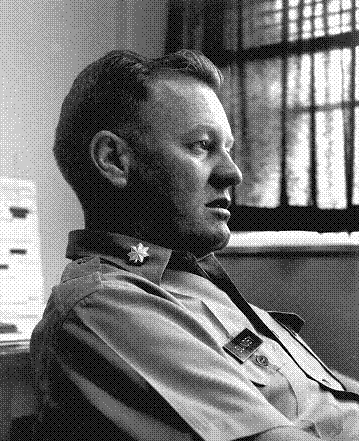Every wanted your own jetpack?
Last week on the 21st was “Back to the Future Day,” with fans still wondering whatever happened to their hoverboards and flying cars. But the U.S. Army Transportation Museum has put on profile a classic invention called the De Lackner Aerocycle, one of their earliest attempts at high-mobility “flying platforms,” that shows we almost had the chance to fly as far back as the 1950s.
Picture this: the Cold War is heating up, and the U.S. military wants every advantage it can get. And one such idea was to have soldiers who could be swiftly deployed in their own vehicles, like the then recently-used helicopters that made search and rescue operations much easier during the Korean War conflict. This led Charles H. Zimmerman, engineer for the National Advisory Committee on Aeronautics (the precursor to NASA), to consider a vehicle where the helicopters rotary blades were placed on the bottom for “kinesthetic” control.
Initial tests led to NACA moving forward with the idea, and charging three companies–De Lackner, Hiller and Bensen–with executing the idea. The result was the De Lackner Aerocycle.
Twelve Aerocycles were made, and each was able to go a few dozen feet in the air and up to 70 mph. They were designed to require only 20 minutes of instruction before actual flight, though the operation was actually quite difficult. Captain Selmer Sundby was the main test pilot of the Aerocycle, going in for numerous test flights that ranged from as short as seconds long, to nearly an hour. And while he survived it long enough to be awarded the Distinguished Flying Cross and be promoted to Lt. Colonel, his tests showed how dangerous the vehicle could be.
Taking a look at it, the main problem is immediately clear: one small mistake could turn the pilot into confetti. But even worse, the rotary blades flexed during flight, allowing them to strike one another and crash. Sundby himself had two accidents, one that was 40 feet in the air at 30-35 mph, and another during a tethered flight.
The Aerocycle was eventually retired, but the idea of it lives on in the Transportation Museum, where one vehicle has been preserved. Also, with thanks to the HeloSociety, there is a video on YouTube which you can view below.
One has to wonder: how would society have been different if these were commercially viable? And is there still a day coming where we will be able to fly independently like the Rocketeer?
Sources:
U.S. Army Transportation Museum, via Popular Mechanics
HeloSociety

